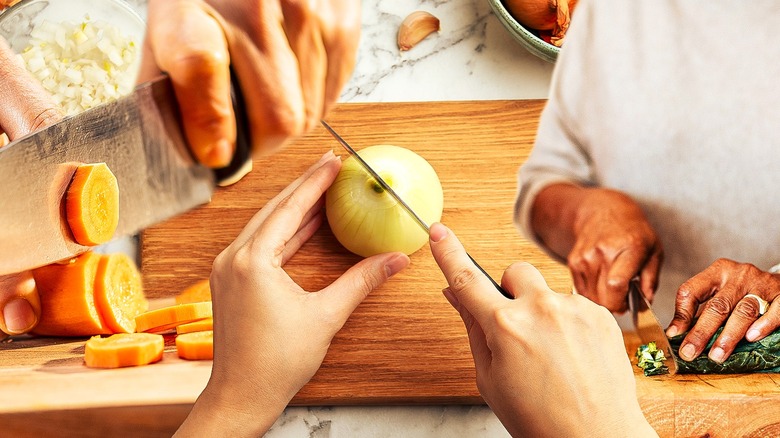In the world of food preparation, the importance of a stable cutting board cannot be overstated. Many kitchen professionals often encounter the dilemma of an unstable cutting board that shifts and slides during use. This not only creates frustration but can also pose safety risks. So, what can be done to avoid any unwanted movement with your cutting board when chopping ingredients? Let's delve into some practical solutions and tips that will enhance your cutting experience.
Before we dive deeper, it is important to understand the various factors that can contribute to a cutting board's instability. From the surface of your kitchen counter to the type of cutting board you are using, every aspect plays a role in how well your cutting board remains stationary while you chop, slice, and dice.

Understanding Your Cutting Board
A wide variety of cutting boards existwood, plastic, rubber, and bamboo, each with its unique benefits and drawbacks. The choice of cutting board can significantly influence movement stability. High-quality cutting boards made from dense materials offer a stable surface. However, even the best boards can slide around on certain countertops. If you're looking for insight into cutting board functions, this is a great place to start.
The Science Behind Stability
The stability of a cutting board largely depends on surface tension and friction. When the surface beneath the cutting board is slippery, it makes it extremely difficult to keep it in place. A rougher or textured surface can increase friction and, consequently, stability.
Practical Solutions to Keep Your Cutting Board Steady
Here are some effective strategies that can help keep your cutting board in place:
1. Use a Damp Cloth or Towel
One of the simplest methods to stabilize your cutting board is placing a damp towel underneath it. The moisture increases the friction between the cutting board and the countertop, preventing movement while chopping ingredients. This method is especially useful for wooden boards, which can warp if left in excessive moisture.
If you want to know more about why it's beneficial to keep a wet towel under your cutting board, check out this detailed article.
2. Invest in a Quality Cutting Board
Using a high-quality cutting board made from materials like bamboo or dense hardwood can drastically improve stability. Boards with a non-slip backing or rubberized feet can also provide added grip.
3. Use a Cutting Board with Feet
Some cutting boards are designed with built-in rubber feet that help prevent slipping. These boards are styled specifically for stable use, making them a great investment for any kitchen professional.
4. Secure It with Non-Slip Mats
If your cutting board does not have rubber feet, consider using a non-slip mat. Place the mat on the countertop before placing your cutting board on top. This method creates an extra layer of grip that can effectively keep the board steady.
Advanced Techniques for Maximum Stability
For those wanting to go the extra mile in their food preparation process, consider these advanced techniques:
1. Use Wood Treatment Oils
Keeping your wooden cutting board well-oiled ensures it remains in excellent condition and less likely to slide. Regular maintenance with cutting board oil keeps the wood pliable and resistant to moisture, thus enhancing stability.
Learn how to properly oil your cutting board in this guide: Oiling Guide.
2. Choose the Right Size
If possible, choose a cutting board that is appropriately sized for your countertop and of a size that feels comfortable to work with. Oversized boards can add unnecessary movement.
What Not to Do with Your Cutting Board
While many people know the right techniques, there are common mistakes that can compromise the stability of a cutting board:
1. Avoiding Simple Maintenance
Neglecting to clean and maintain your cutting board regularly can lead to warping and shrinking, which, in turn, can lead to increased instability.
2. Using the Wrong Surface
Placing a cutting board on a wet surface can cause it to slide around. Always ensure the surface underneath is dry and clean before placing the board down.

FAQ Section
1. Can I use any type of towel under my cutting board?
Yes, but a damp towel is the most effective as it increases friction. Soft towels that absorb moisture work best.
2. What type of cutting board is the most stable?
Generally, hardwood cutting boards or those with rubber feet tend to be the most stable options available.
3. How often should I oil my wooden cutting board?
It is recommended to oil your wooden cutting board every few weeks, depending on usage. More frequent use requires more regular maintenance.
For additional insights on maintaining your cutting board, visit Food Safety Blog.
As an Amazon Associate, I earn from qualifying purchases.


























